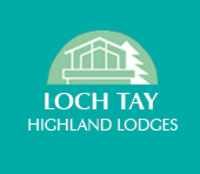


Local Sponsors
-
Braidhaugh Holiday Park
South Bridgend, Crieff Perthshire PH7 4DH
A spectacular place to get away from the city and enjoy being among the trees. Our holidays are affordable and highly enjoyable for all ages!
-
Loch Tay Highland Lodges
Loch Tay Highland Lodges Milton Morenish Estate, Killin, FK21 8TY
Breathtaking scenery on the shores of Loch Tay we offer lodges, a luxury house, wigwams, tepees and woodland cabins throughout the year. Our site offers a range of activities, walks, boat hire and great food at our Boathouse Restaurant.
More information
Many thanks to The Braidhaugh Holiday Park for facilitating this camera's location. The River Earn originates from Loch Earn at St Fillans and flows east through Strathearn before turning east and south, eventually joining the River Tay near Abernethy. Stretching approximately 46 miles in length, the Earn passes by notable locations such as Comrie, Crieff, and Bridge of Earn. The surrounding land is generally flat but occasionally experiences flooding. To monitor the river level on the River Earn, we have installed a Farson Digital webcam. Anglers frequently visit the Earn, and fishing permits are typically required.Crieff, known in Scottish Gaelic as Craoibh, is a market town situated in Perth and Kinross, Scotland. For centuries, Highlanders traveled south to Crieff to sell their black cattle, whose meat and hides were highly sought after by the growing urban populations in Lowland Scotland and northern England. Crieff was reminiscent of a "wild west" town, bustling with cattle milling, horse thieves, bandits, and intoxicated drovers. The inevitable acts of violence were met with punishment at the Kind Gallows, earning Crieff a reputation throughout Europe.For numerous centuries, Highlanders journeyed to Crieff to participate in the Michaelmas cattle sale, known as the "October Tryst," held annually. During this event, the surrounding fields and hillsides would be teeming with approximately 30,000 cattle, some even originating from distant regions like Caithness and the Outer Hebrides. In October 1714, Rob Roy MacGregor and his followers congregated in Crieff for the October Tryst. They assembled in Crieff Town Square, where they sang Jacobite songs and raised numerous loyal toasts to their uncrowned King James VIII, captivating the gathering crowd.In 1716, after the Battle of Sheriffmuir, 350 Highlanders returning from the conflict set fire to most of Crieff, reducing it to ash. However, in 1731, James Drummond, the 3rd Duke of Perth, redeveloped the town's central area, establishing James Square and introducing a textile industry with a flax factory. During the 1745 uprising, the Highlanders were inclined to set fire to the town once again, expressing that "she shoud be a braw toun gin she haed anither sing." However, it was saved thanks to the intervention of the Duke of Perth, a friend and supporter of Prince Charles. In February 1746, the Jacobite army quartered in and around Crieff, with Prince Charles Edward Stuart holding his final war council in the old Drummond Arms Inn located in James Square, which is now behind the present abandoned hotel building on Hill Street.By the late 18th century, the original hanging tree utilized by the Earls of Strathearn for disciplinary purposes had been replaced by a formal wooden structure in an area known as Gallowhaugh, now referred to as Gallowhill, situated at the bottom of Burrell Street. The current Ford Road was previously called Gallowford Road, leading down past the gallows to the crossing point over the River Earn. During his visit to Crieff in 1796, Sir Walter Scott observed the gallows known as "Gallowsford."The construction of Crieff Town Hall was completed in 1850. In the 19th century, Crieff gained popularity as a fashionable destination for tourists visiting the Highlands and as a country retreat for affluent businessmen from Edinburgh, Glasgow, and beyond. Many of these visitors frequented the Crieff hydropathic establishment, now known as Crieff Hydro, which opened its doors in 1868.Previously, Crieff was served by Crieff railway station, which connected the town to Perth, Comrie, and Gleneagles. The station, established in 1856 by the Crieff Junction Railway, was unfortunately closed in 1964 as part of the Beeching cuts implemented by British Railways.



